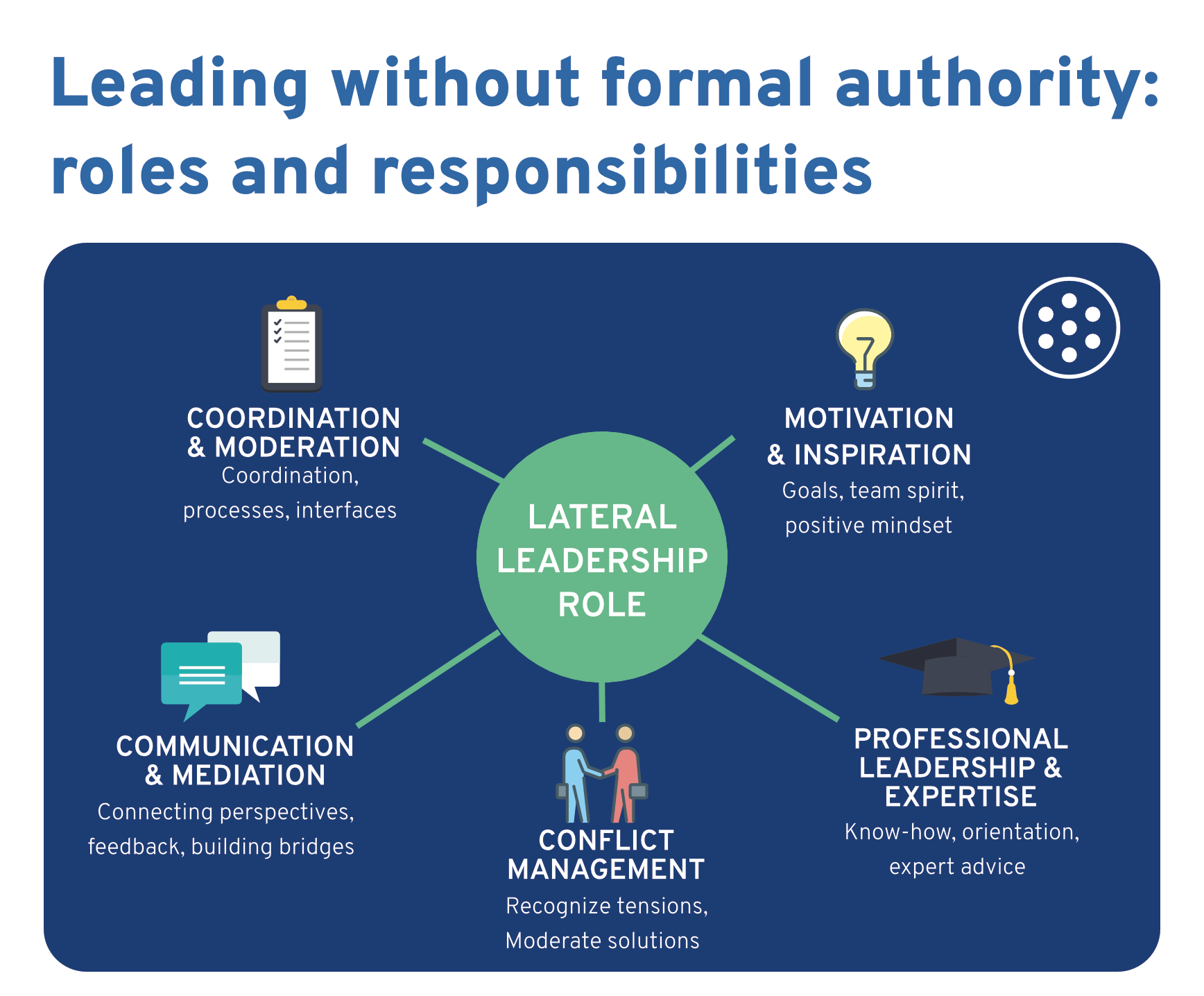
Lateral Leadership - The meaning of taking responsibility without formal authority
In everyday working life, situations often arise in which employees take on management responsibility without being officially appointed as a manager. This form of leadership is often referred to as lateral leadership. It differs fundamentally from traditional hierarchical leadership, as influence is not enforced through authority and authority to issue instructions. Instead, the success of a lateral leader depends primarily on their persuasiveness, communication skills and natural authority. Without the authority to issue directives, the manager is dependent on the cooperation of the employees. This can lead to conflicts if team members do not accept leadership without official authority or if resistance arises. In the following, we will give you an overview of the most important aspects of lateral leadership and offer valuable tips for successfully mastering this responsible role.
What exactly is lateral leadership?
Lateral leadership means assuming leadership responsibility without taking on a formal hierarchical level above the other team members. Lateral leadership is based on professional competence, trust and strong communication instead of authority. This type of leadership is particularly common in modern and agile companies where teams work on an interdisciplinary and project-based basis. Here, employees must be able to exert influence and motivate colleagues without formal authority.
Lateral leadership is characterized by
- Cross-divisional cooperation
- Networking
- Flat hierarchies
- Team and project work
The central goal of lateral leadership is to achieve common overarching goals. But this is precisely where the challenge lies: the team members involved often have diverging interests due to their different functions and positions in the company.
Leading without authority: roles and responsibilities
In lateral leadership, people take on numerous tasks that are otherwise reserved for traditional managers - but without direct authority to issue instructions. The most important responsibilities include
- Coordination and moderation between team members
- Motivating and inspiring employees
- Professional leadership and expertise
- Conflict management
- Communication and mediation

Why is this type of leadership important?
Lateral leadership is essential in many companies as it enables them to work flexibly and agilely. The increasing project orientation and flatter hierarchies in companies require managers who can exert influence without exercising formal power. Functioning lateral leadership therefore brings advantages:
Lateral leadership...
... promotes the personal responsibility of employees
... increases collaboration
... enables agile working
... offers development opportunities for employees
What does successful leadership without a formal position look like in practice?
A typical example is the role of the project manager: he is responsible for the success of the project, but is not the direct superior of his team members. In order to drive the project forward, they must use clear communication, specialist knowledge and diplomatic skills to ensure that everyone involved works together effectively and achieves the common goals.
As he has no authority to issue instructions, the project manager cannot give direct orders. Instead, they must motivate their team through professional competence, persuasiveness and clear objectives. One of their key tasks is to define roles and responsibilities within the team, set priorities and defuse potential conflicts at an early stage.

Key skills and tips for leading without hierarchical power
The following skills can be decisive in overcoming the challenges of leadership without a superior function:
- Natural authority
- Strong communication skills
- Empathy
- Negotiation skills
- Conflict resolution
- Willingness to take responsibility and conscientiousness
- Active listening
- Creating trust
- Resilience and frustration tolerance
Seminars and training courses can provide valuable support, particularly in lateral management. They provide practical strategies for acting confidently, improving communication skills and resolving conflicts constructively. In this way, insecurities can be reduced and leadership skills can be developed in a targeted manner.